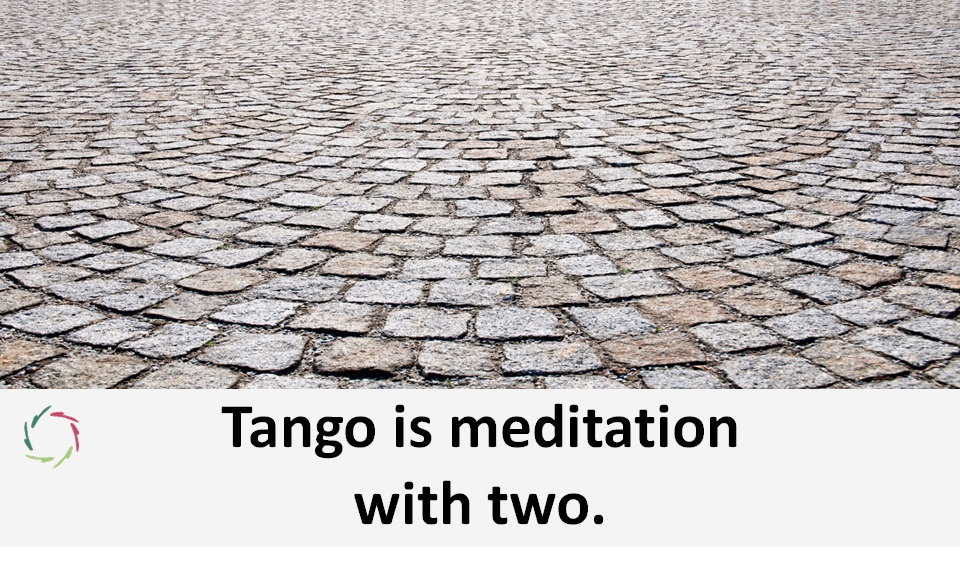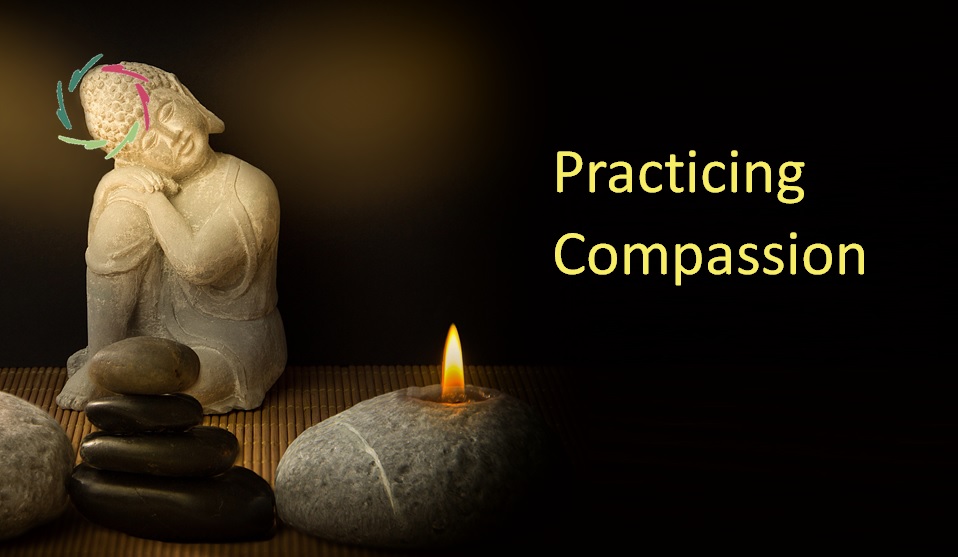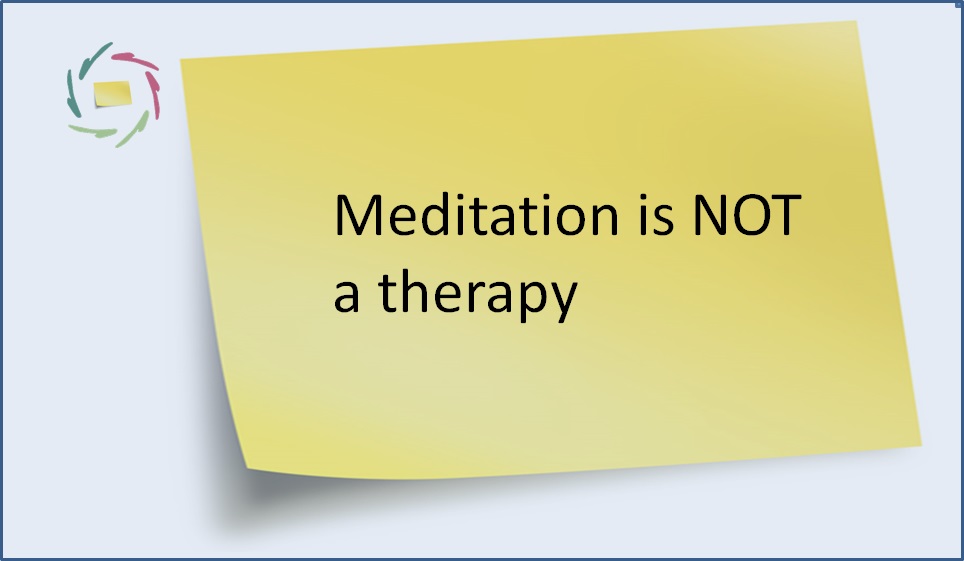Tango is Meditation With Two

One definition of meditation is to not let distinct thoughts obstruct an underlying current of thinking without thoughts.
Many tango dancers may recognize this in their dancing now and then.
If you are not a complete beginner, you probably do so too. It may realize itself in different ways. The feeling of unity as a dancing couple. The experience of ‘hearing the music inside.’ The feeling of movements and steps that are flowing out of themselves… Who is dancing? Where is the environment? Why is time running so quickly? Tango, at such times, is meditation. Not the dry meditation of some Zen masters. Not the running-away-of-all-feelings meditation of some Western seekers of Eastern enlightenment. Quite the contrary. As I just described it,
tango is meditation precisely because it is nothing but feeling. There is a free flowing of everything together with this feeling.
Therefore there is nothing mentally obstructing anything else. There is a lot of silent, non-verbal communication. Closeness. Presence. Togetherness. Attention. Very deep attention: to one’s own feelings, to the feelings of the dancing partner, to the feelings of the orchestra. It all culminates into movement and that movement is made… attentively. Thinking without thoughts. Can one even still call this ‘thinking?’
There is freedom and openness, depth and respect. And there is trust.
Some see the essence of tango in trust: man trusts woman. Woman trusts man. Both are giving their best. Real meditation too is about these characteristics together. This does not need to be performed on a cushion. It can be performed everywhere: in tango, in life.
A well danced tango is a meditation with two.
It is a striving to give attention to what happens here and now in a profound way. ‘Here and now’ are meant in space and time of course, but not altogether. They are mainly a state of mind, something like a continuous wave of ‘emptiness.’ One can see and feel it sometimes explicitly in tango when the movement of the dancers slows down. It can become very slow, an almost imperceptible movement yet without standstill. The energy is then almost completely in the possibility of the next movement, which can go in any direction. Minds are ‘blank’. Those moments can be of high intension, like a prolonged silence between two notes. Then the silence overflows in the next note. The dance continues.
Attention in tango as in meditation in general goes with ups and downs. But that is not important. The ups and downs are not modulations of quality within the meditation. The way they are handled is even integrally what meditation is about. If it goes less well, one just continues… dancing.
As in any other kind of good meditation, there are no errors. And even if there are ‘errors’, they are not errors, no ‘obstructions’.
They are the salt in the bread.
They are themselves the essence.
Without errors, there is no dance but only mechanical procedures. Tango is about the essence, the errors. That may be a reason why tango music can be quite sad. It is about the errors in life. A love gone and regretted forever.


